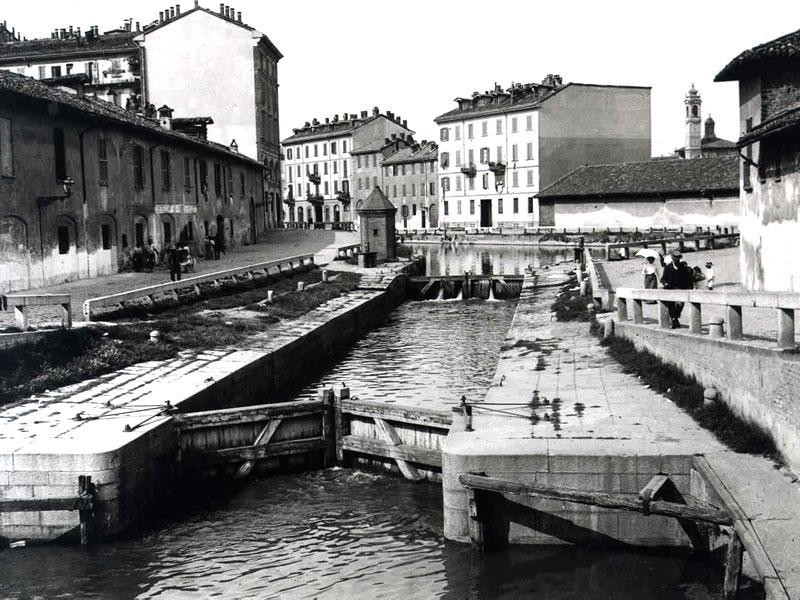Naviglio Grande
The Naviglio Grande is a waterway that is developed for a length of 50 Km and ends in the dock of Porta Ticinese in Milan. This is the first work of the kind made in Europe, one of the great engineering medieval infrastructure. It was built for defensive and irrigation purposes in 1152, by William of Guintellino, initially was not navigable. It became in 1272, when the work was completed: by means of barges called cagnone, mezzane o borcelli (depending on size), wore from Milan to Maggiore Lake and Switzerland salt, wheat, wine, textiles, manure and ash; on the contrary, down in the city brick, clay, sand, gravel, marble, granite, foodstuffs and livestock. The Canal was connected to the moat that surrounded the city (Ring of Canals) only a century later, to meet the needs of the "Venerable Factory of the Cathedral", by getting the marble needed directly to the St.Eustorgio Lake. In 1585 starts a first reinforcement of the structure, expanded again in the early nineteenth century in view of the Naviglio Pavese. Several vintage photos show the banks of the waterway crowded with fishermen and bathers relaxing in atmosphere Belle Epoque, or in full "Ambrosiano Carnival". In the towpath and Ripa have flourished three glorious rowing sports clubs; in 1969 the drummer Giorgio Vannidecise has opened a jazz club, the "Capolinea", which became a worldwide reference for the great jazz musicians of all time. In recent years, a regional program for the enhancement of Lombard canals has allowed the recovery of many historic buildings: the Naviglio Grande illuminates the night life with restaurants, pubs and taverns; while during the day, the neighborhood is home to artists' studios, craft shops, picturesque views and cultural events. The towpath it can sail and enjoy the scenery around the city.





